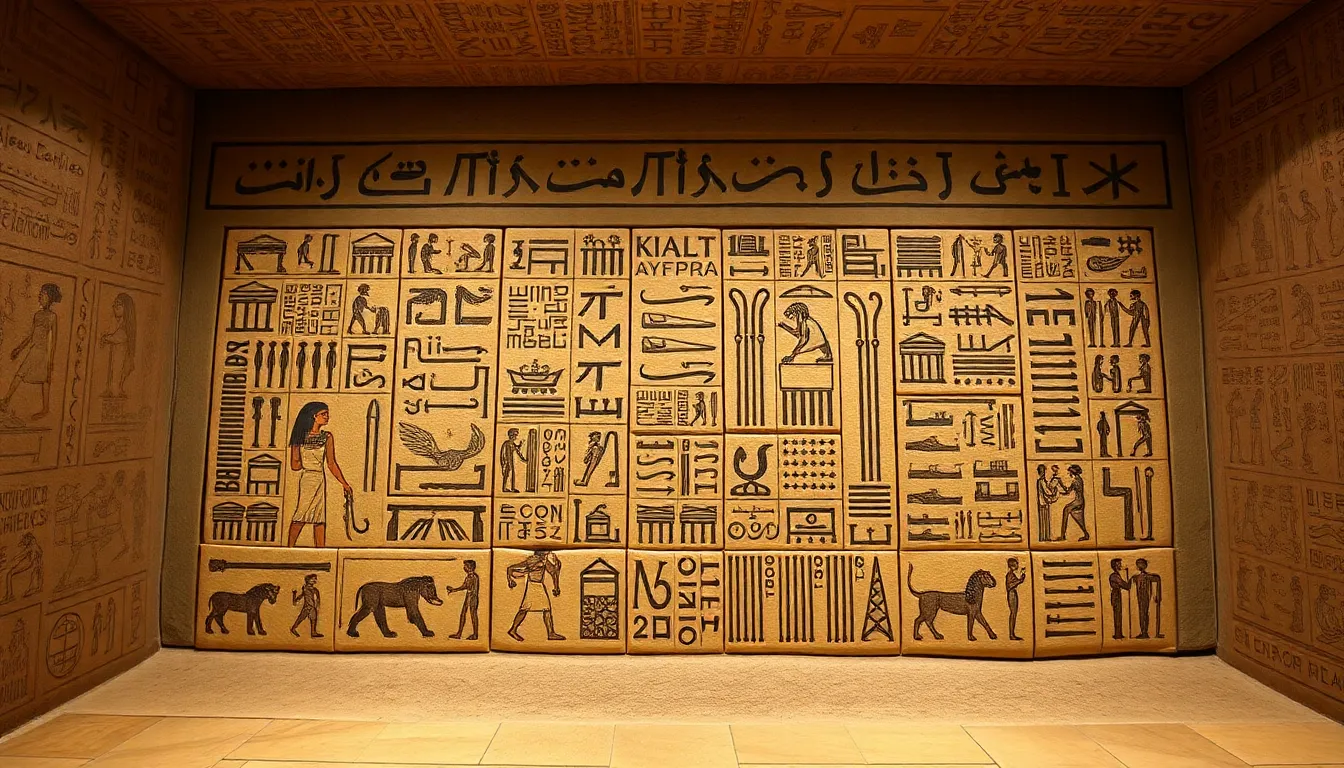The Influence of Tomb Texts on Modern Art
I. Introduction
Tomb texts, also known as funerary texts, are inscriptions found within ancient burial sites that provide insights into the beliefs and practices of the cultures that created them. These texts hold significant historical importance, particularly in ancient Egypt, where they served to guide the deceased through the afterlife. In modern times, there exists a profound relationship between these ancient texts and contemporary art, as artists draw inspiration from the themes and symbols encapsulated within them. This article aims to explore the influence of tomb texts on contemporary artistic expressions, examining how these ancient narratives continue to resonate in today’s creative landscape.
II. Historical Context of Tomb Texts
Tomb texts have a long and rich history, particularly in ancient Egyptian civilization, where they were integral to funerary practices. These inscriptions, often composed in hieroglyphs, served both a spiritual and practical purpose: they were believed to ensure safe passage for the deceased into the afterlife, providing them with the necessary information and encouragement for their journey.
The role of tomb inscriptions extended beyond mere decoration; they reflected the cultural and religious practices of the time, embedding the values and beliefs of ancient societies into the very fabric of their burial customs. As we transitioned from ancient to modern interpretations, these texts morphed from sacred inscriptions into sources of inspiration for artists, historians, and scholars alike.
III. Thematic Elements of Tomb Texts
The thematic elements of tomb texts reveal a tapestry of beliefs surrounding death, immortality, and the divine. Common themes include:
- Immortality: The belief in life after death and the eternal nature of the soul.
- The Afterlife: Descriptions of the journey through the afterlife, including trials and rewards.
- Divine Interactions: The relationship between the deceased and the gods, often seeking protection and guidance.
Symbolism and iconography play a significant role in these inscriptions, with various images and motifs representing different aspects of the afterlife and spiritual beliefs. Themes such as resurrection and divine favor resonate strongly with contemporary societal issues, including the human quest for meaning and the fear of mortality.
IV. Case Studies of Modern Artists Inspired by Tomb Texts
Numerous modern artists have drawn inspiration from ancient tomb texts, integrating their themes and motifs into contemporary works. Notable artists include:
- Christina Quarles: Her works often explore themes of identity and the human experience, echoing the quest for immortality found in tomb inscriptions.
- Yinka Shonibare: Known for his use of historical references, Shonibare’s art reflects on colonialism and identity, paralleling ideas of divine interactions found in ancient texts.
An analysis of specific works reveals how these artists interpret and recontextualize ancient themes. For instance, Quarles’ layering of human forms can be seen as a modern reflection of the complexities of the soul’s journey after death. Interviews with these artists often reveal a deep appreciation for the narratives contained in tomb texts, viewing them as a source of wisdom and inspiration.
V. Techniques and Mediums in Modern Art Reflecting Tomb Texts
The techniques and mediums employed by modern artists often echo ancient practices. Artists may utilize:
- Traditional Painting Techniques: Many artists use methods that hark back to ancient Egyptian styles, incorporating vibrant colors and symbolic imagery.
- Mixed Media: The blending of different materials allows artists to create layered meanings, much like the complex narratives found in tomb texts.
- Installation Art: Some artists create immersive experiences that transport viewers into the world of ancient beliefs, reflecting the spatial dynamics of tombs.
These techniques not only honor the craftsmanship of ancient artisans but also serve to bridge the gap between past and present artistic expressions.
VI. The Role of Museums and Exhibitions
Museums play a crucial role in connecting tomb texts and modern art. Curators often design exhibitions that highlight the dialogue between ancient and contemporary works, fostering a deeper understanding of historical influences. The impact of these exhibitions on public perception is significant, as they encourage visitors to appreciate the continued relevance of ancient narratives.
Notable exhibitions have showcased this relationship, such as:
- Eternal Egypt: An exhibition that juxtaposed ancient artifacts with modern interpretations, inviting a dialogue between the two.
- Afterlife: Ancient Egyptian Art: This exhibition examined how ancient beliefs about the afterlife have influenced contemporary artistic practices.
VII. Critiques and Controversies
The appropriation of ancient texts in modern art is not without its critiques. Debates surrounding authenticity and cultural sensitivity raise important questions about the responsibility of artists when drawing from historical sources. Perspectives vary widely, with some viewing this influence as a celebration of ancient wisdom, while others argue that it can lead to misrepresentation or oversimplification of complex cultures.
Academic discourse plays a vital role in shaping the narrative of influence, prompting artists and scholars alike to engage in dialogue about the implications of their work. This discussion is essential for fostering a respectful and informed approach to the intersection of ancient texts and modern artistry.
VIII. Conclusion
The enduring impact of tomb texts on modern art is a testament to the timelessness of the themes they encapsulate. As contemporary artists continue to explore the narratives of immortality, the afterlife, and divine interactions, they remind us of our shared human experience across time. Recognizing these historical influences is crucial for appreciating the depth and complexity of contemporary creativity.
Looking forward, there are vast opportunities for further research and exploration in the intersection of art and history, encouraging a continued dialogue between ancient wisdom and modern expression.




